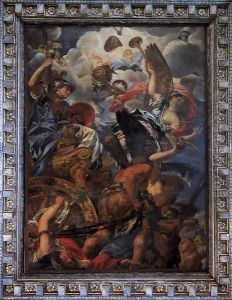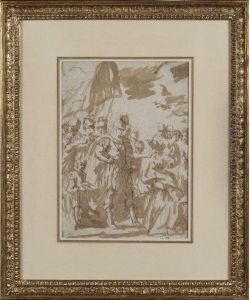Giovanni Coli Paintings
Giovanni Coli was an Italian painter born in 1636 in Lucca, a city in Tuscany known for its rich artistic tradition. Little is known about his early life and training, which is common for many artists of his time. However, it is believed that he was deeply influenced by the Baroque movement, which was dominant in Italy during his lifetime. The Baroque style, known for its dramatic use of light and shadow, as well as its emphasis on movement and emotion, clearly resonates in Coli's works.
Coli's painting career is often discussed alongside that of Filippo Gherardi, another artist from Lucca with whom he frequently collaborated. Together, they worked on several significant commissions, particularly in decorating churches and palaces in Italy. Their partnership is a notable example of collaborative work in the Baroque period, showcasing how artists could combine their talents to achieve more complex and grandiose compositions.
One of the duo's most famous projects is the decoration of the Palazzo Labia in Venice, where they painted scenes from the life of Cleopatra. This work is celebrated for its vibrant energy and elaborate detail, reflecting the opulence and dynamic spirit of the Venetian Republic at its peak. The collaboration between Coli and Gherardi was highly successful, resulting in a body of work that remains admired for its creativity and execution.
Giovanni Coli died in 1681, leaving behind a legacy that, though not as widely recognized today as some of his contemporaries, is significant for its contribution to the Baroque movement in Italy. His works, characterized by their lively compositions and detailed narrative scenes, continue to be studied and appreciated for their artistic merit and historical value.











